A number of cello sonatas composed around the time of the Brahms sonatas reveal burgeoning cello writing. I’d like to feature two of my favorite romantic cello sonatas, which I heard my father play when I was growing up. The Richard Strauss and Edvard Grieg sonatas are more rarely performed than the masterful Brahms sonatas but wonderful, nonetheless, and they reflect how the capabilities of the cello were gradually being explored and featured.
Richard Strauss: Cello Sonata in F major, Op. 6
Composed just one year after Brahms Sonata in E minor, the brilliant Strauss Cello Sonata in F major Op. 6 from 1883 was composed when Strauss was only nineteen years old. Dedicated to the Czech cellist Hanuš Wihan, who was later the dedicatee of Dvořák’s Cello Concerto, the sonata is well-written, heroic, and virtuosic, with grand leaps in the upper ranges of the cello and challenging lines in the piano. The melodies are gorgeous. There’s even a fugue in the first movement.
Mstislav Rostropovich and Vasso Devetzi
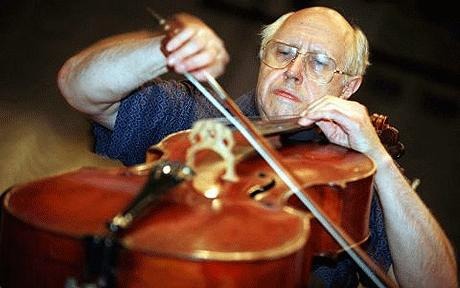
Mstislav Rostropovich
The recording of the Strauss Sonata performed by Mstislav Rostropovich and Vasso Devetzi is expansive and as one would expect romantic. They bring out the contrasting moods of the Allegro con brio—passionate and mysterious, playful and wistful, heroic and daring. During the second movement, an Andante, Rostropovich plays with a generous vibrato. His gorgeous sound is riveting. Time stands still with the final pizzicato notes. The third movement Finale: Allegro Vivo opens lightly and with humor but the remainder of the piece continues the expansive style of the first movement with time taken often and fullness in the phrasing.
Richard Strauss: Cello Sonata in F Major, Op. 6, TrV 115 – I. Allegro con brio (Mstislav Rostropovich, cello; Vasso Devetzi, piano)
Richard Strauss: Cello Sonata in F Major, Op. 6, TrV 115 – II. Andante ma non troppo (Mstislav Rostropovich, cello; Vasso Devetzi, piano)
Steven Isserlis and Stephen Hough
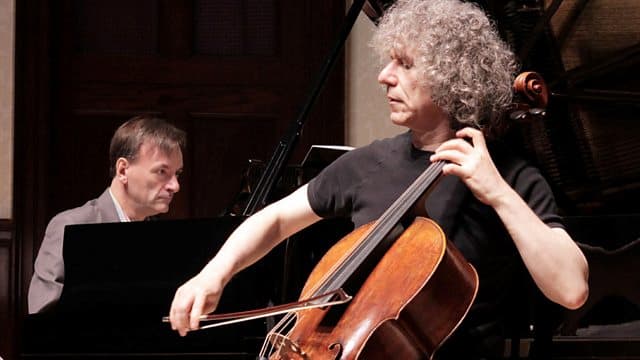
Steven Isserlis and Stephen Hough
The remarkable duo team Steven Isserlis and Stephen Hough play the piece lightly and never heavy-handed as some performers do, with some stunning moments of transparency. Their first movement is a full minute brisker.
The second movement is on the slower side, which I think suits the tender and even sorrowful mood. Isserlis plays the return of the first melody virtually without vibrato and it is compelling. The duo effectively builds in intensity to the more dramatic mid-point of the movement but the non-vibrato and hushed sound of the opening returns. The movement ends breathlessly suspended in time. Their performance of the Finale: Allegro Vivo is spirited and virtuosic but the lightness is maintained, especially of the difficult cello bowing that in other hands sounds awkward and heavy. This rendition sounds effortless and again it is quite a bit quicker than Rostropovich and Devetzi.
Richard Strauss: Cello Sonata in F Major, Op. 6, TrV 115 – II. Andante ma non troppo (Steven Isserlis, cello; Stephen Hough, piano)
Richard Strauss: Cello Sonata in F Major, Op. 6, TrV 115 – III. Finale: Allegro vivo (Steven Isserlis, cello; Stephen Hough, piano)
Leslie Parnas and Manfred Fock
Leslie Parnas and Manfred Fock, another admirable pair, play the first movement more romantically, (the movement runs almost a minute longer than Isserlis, but similar in tempo to Rostropovich) with a bit more presence and it’s wonderful playing. I would say that this duos’ Finale is also on the full and dramatic side.
Richard Strauss: Cello Sonata in F Major, Op. 6, TrV 115 – I. Allegro con brio (Leslie Parnas, cello; Manfred Fock, piano)
Richard Strauss: Cello Sonata in F Major, Op. 6, TrV 115 – III. Finale: Allegro vivo (Leslie Parnas, cello; Manfred Fock, piano)
Edvard Grieg: Cello Sonata in A minor, Op. 36
Edvard Grieg, the famed Norwegian composer wrote his Cello Sonata in A minor Op. 36 during the years 1882-3. The piece was dedicated to his cello-playing brother John, but after all, the premier was performed in 1883 in Leipzig by John’s former cello teacher the famed cellist Julius Klengel with Grieg at the piano. The first movement Allegro molto features numerous expressive moods—it’s quite impassioned—and unusually enough, it includes a cadenza for the cello. The second movement is a luscious Andante molto tranquillo and the finale Allegro -Allegro molto e marcato presents several dance rhythms.
Leonard Rose and Leonid Hambro
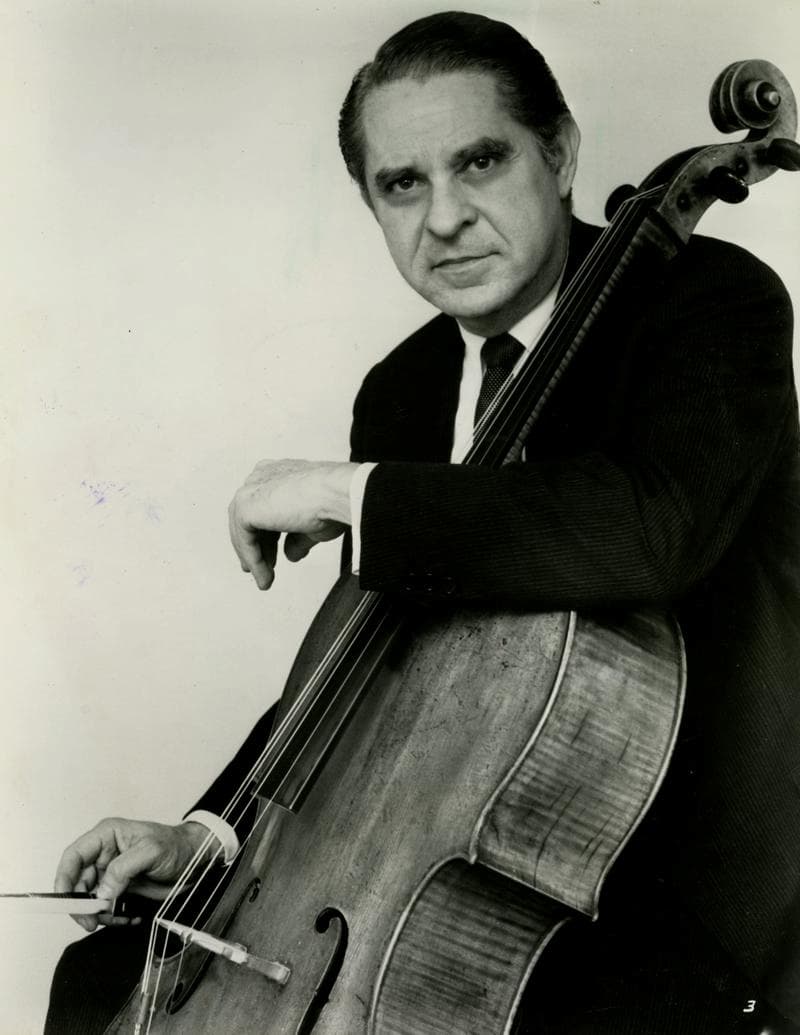
Leonard Rose
The mesmerizing interpretation of the Grieg Sonata by cellist Leonard Rose and pianist Leonid Hambro feels definitive to me. Rose plays with an exquisite sound and Hambro’s presence is enthralling yet the piano never overpowers. The cello cadenza in movement I, stops us in our tracks, dramatically changing the mood. When the opening theme returns, it is with spellbinding passion and when the movement ends, after this gamut of emotions, it feels complete.
The cello begins the last movement out of time, alone and questioning. Rose plays it quite lovingly. But soon the scherzo-like main theme enters. The pianist must be very limber and accomplished in this movement as it’s vivid piano writing. Grieg puts the instruments on equal footing often having them trade thematic material, echoing each other. Rose handles the spirited and pianistic dance moves with panache and the duo often plays with childlike innocence and delicacy. It’s lovely. The piece comes to a spinetingling end with a fantastic flourish of arpeggiated figures in the piano.
Edvard Grieg: Cello Sonata in A minor, Op. 36 – I. Allegro agitato (Leonard Rose, cello; Leonid Hambro, piano)
Edvard Grieg: Cello Sonata in A minor, Op. 36 – III. Allegro – Allegro molto e marcato (Leonard Rose, cello; Leonid Hambro, piano)
Truls Mørk and Håvard Gimse
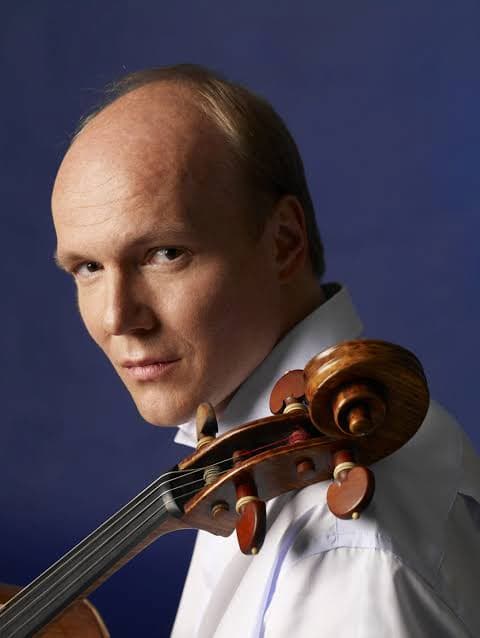
Truls Mørk
Norwegian cellist Truls Mørk and Håvard Gimse, pianist, play the first movement more agitato and with energetic fury. Mørk’s lush sound is well-matched to Gimse’s full throttle playing. The con fuoco – or with fire – segments become even more intense. It’s a riveting performance but vehement. Mørk and Gimse play the second movement slower than the next duo featuring Birkeland and Gimse and the potent interpretation bursts with sonority. I find this duo’s playing of the last movement a bit heavy-handed.
Truls Mørk and Havard Gimse Perform Edvard Grieg: Cello Sonata in A minor, Op. 36 movement I and II
Øystein Birkeland and Håvard Gimse

Håvard Gimse
Interestingly another Norwegian cellist Øystein Birkeland plays the Grieg with the same pianist, Håvard Gimse, and theirs is also a passionate account of this sonata. When the sensitive motif enters within two minutes it is breathtaking. They shape the tension fiercely all the way to the cadenza mid-movement and the propulsive increase of tempo to the end of the movement takes us right out of our seats. The gorgeous slow movement motif in the middle range of the cello becomes more and more fervent. This duo plays most of the slow movement ardently and not until the close of the movement is it actually tranquillo. The last movement has the requisite lightness in the folk-like motifs as well as the pulsating marcato where it is required. It is powerful and convincing playing.
Edvard Grieg: Cello Sonata in A minor, Op. 36 – II. Andante molto tranquillo (Oystein Birkeland, cello; Håvard Gimse, piano)
Edvard Grieg: Cello Sonata in A minor, Op. 36 – III. Allegro – Allegro molto (Oystein Birkeland, cello; Håvard Gimse, piano)
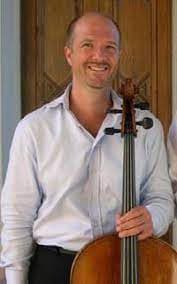
Øystein Birkeland
I hope you agree that these two sonatas take the cello into emotional territory as yet unexplored at the time and illustrate the dramatic possibilities and divergent emotions available to cellists. These composers set the stage for works that came later.
For more of the best in classical music, sign up to our E-Newsletter



